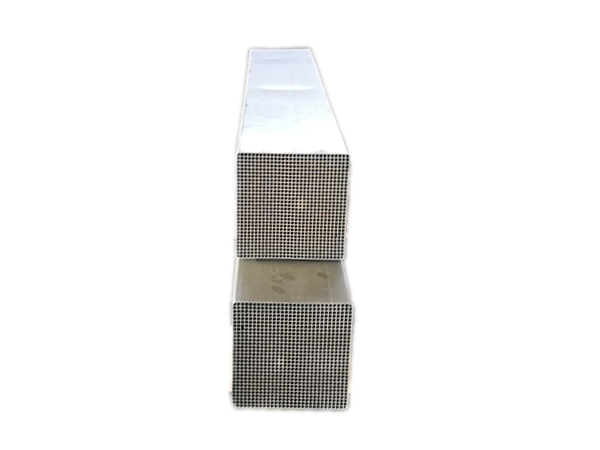The difference between honeycomb catalysts and plate catalysts
Publishdate:2018-04-23 Views:87
1. Structure
The honeycomb catalyst is a homogeneous catalyst, which is like on the surface and inside, and does not affect the performance of the catalyst when subjected to wear and tear from flue gas ash.
Plate catalysts are heterogeneous catalysts and belong to the coating process. Under wear conditions, their performance will be greatly affected.
2. Pitch and specific surface area
For coal-fired units, the pitch of honeycomb catalyst pores is 6.0-9.2mm; In the same situation, the spacing between plate catalysts is 4.0-8.0; The specific surface area of honeycomb catalysts is more than 30% larger than that of flat catalysts.
3.3. Density
The density of honeycomb catalyst is 0.5kg/m ³, The density of the plate catalyst is 0.2kg/m ³
4. Service life
The lifespan of honeycomb catalysts is greater than 24000 hours, while the lifespan of plate catalysts ranges from 18000 to 20000 hours. So, the service life of honeycomb catalysts is about 40% longer than that of plate catalysts.
5. Economic benefits
Honeycomb style is more cost-effective than flat panel style
• Differences in the total amount of catalyst used due to differences in specific surface area;
The increase in other equipment (engineering) costs due to the increase in reactor volume;
Due to different lifespans, the catalyst replacement cycle varies, resulting in different replacement shutdowns and maintenance costs.

1. Structure
The honeycomb catalyst is a homogeneous catalyst, which is like on the surface and inside, and does not affect the performance of the catalyst when subjected to wear and tear from flue gas ash.
Plate catalysts are heterogeneous catalysts and belong to the coating process. Under wear conditions, their performance will be greatly affected.
2. Pitch and specific surface area
For coal-fired units, the pitch of honeycomb catalyst pores is 6.0-9.2mm; In the same situation, the spacing between plate catalysts is 4.0-8.0; The specific surface area of honeycomb catalysts is more than 30% larger than that of flat catalysts.
3.3. Density
The density of honeycomb catalyst is 0.5kg/m ³, The density of the plate catalyst is 0.2kg/m ³
4. Service life
The lifespan of honeycomb catalysts is greater than 24000 hours, while the lifespan of plate catalysts ranges from 18000 to 20000 hours. So, the service life of honeycomb catalysts is about 40% longer than that of plate catalysts.
5. Economic benefits
Honeycomb style is more cost-effective than flat panel style
• Differences in the total amount of catalyst used due to differences in specific surface area;
The increase in other equipment (engineering) costs due to the increase in reactor volume;
Due to different lifespans, the catalyst replacement cycle varies, resulting in different replacement shutdowns and maintenance costs.





